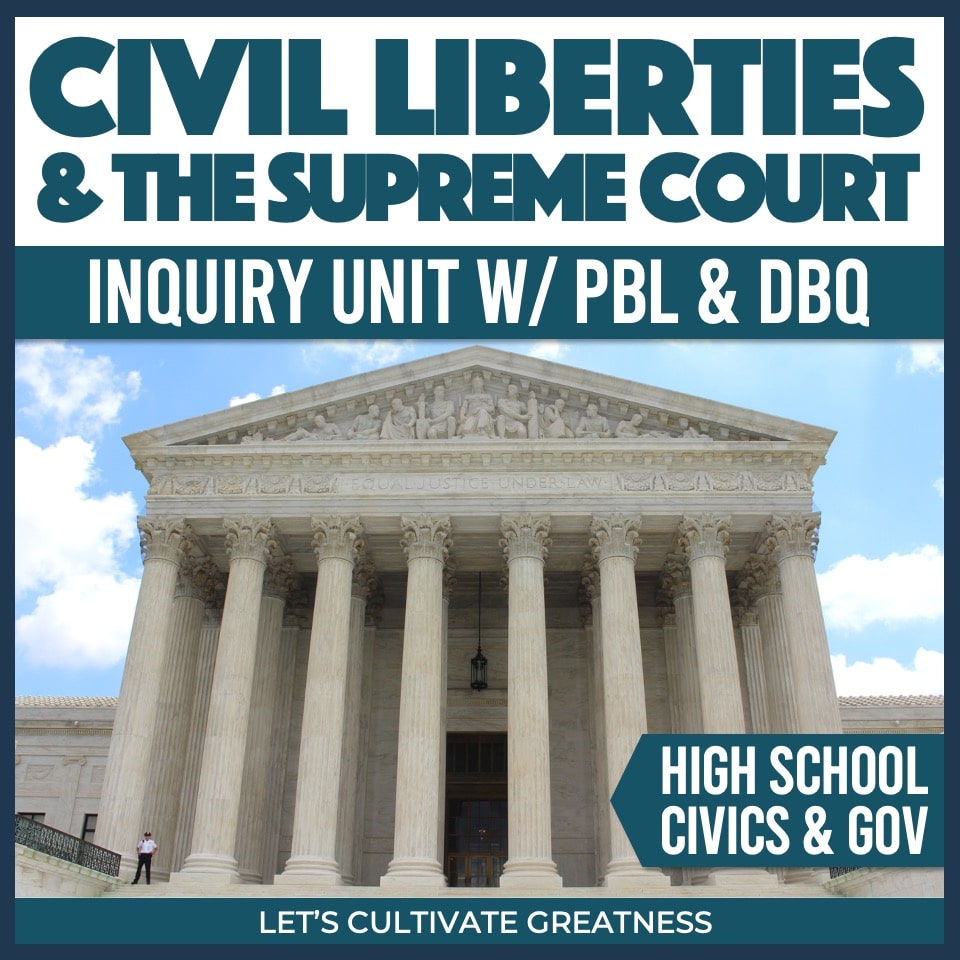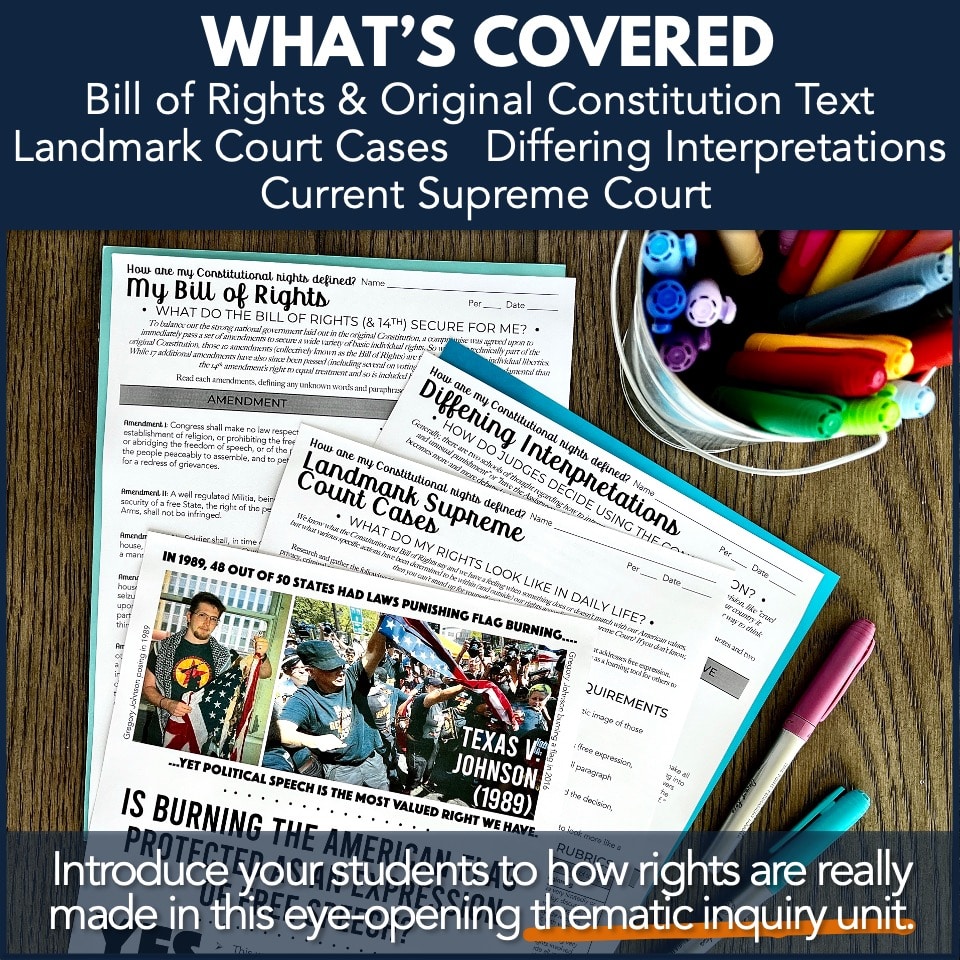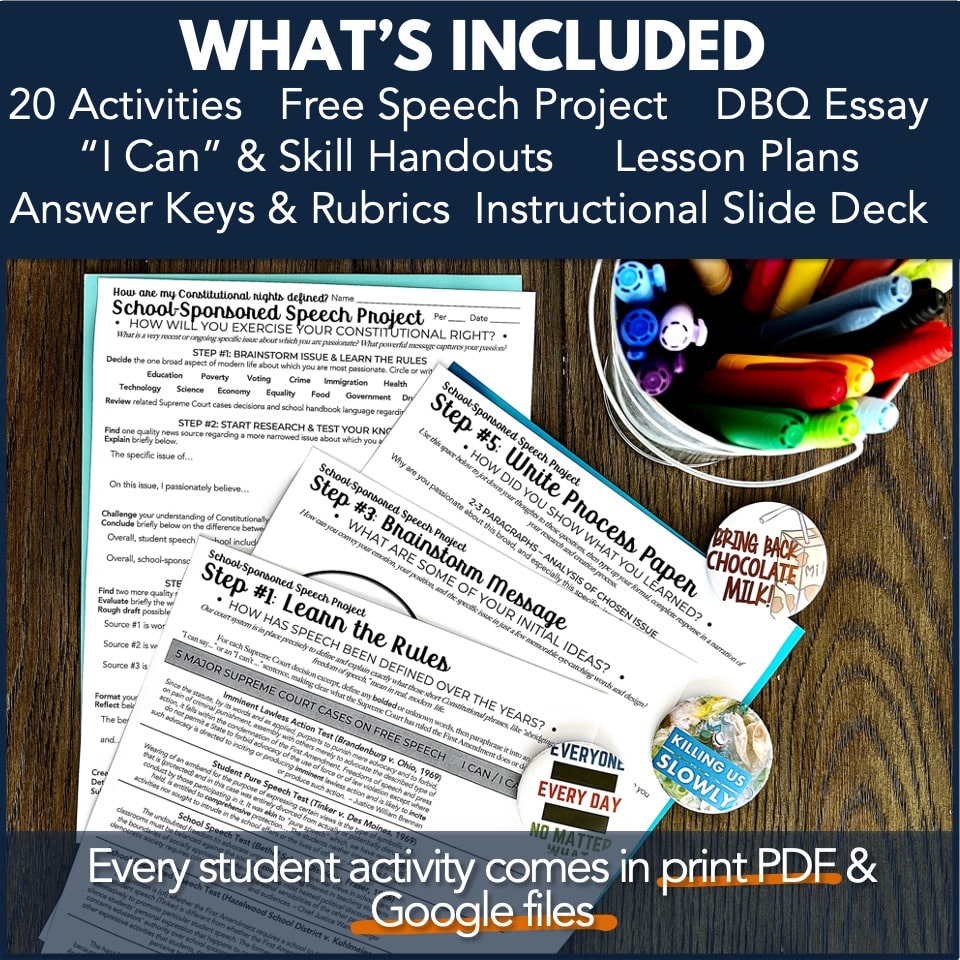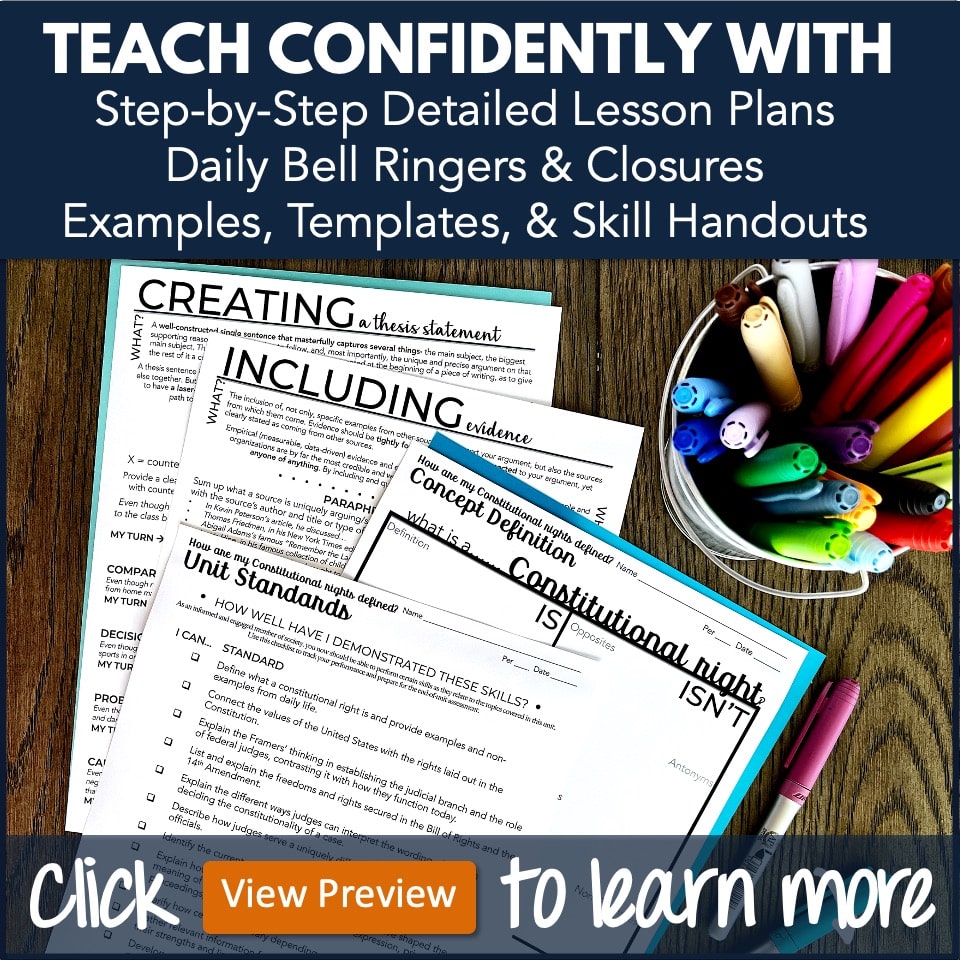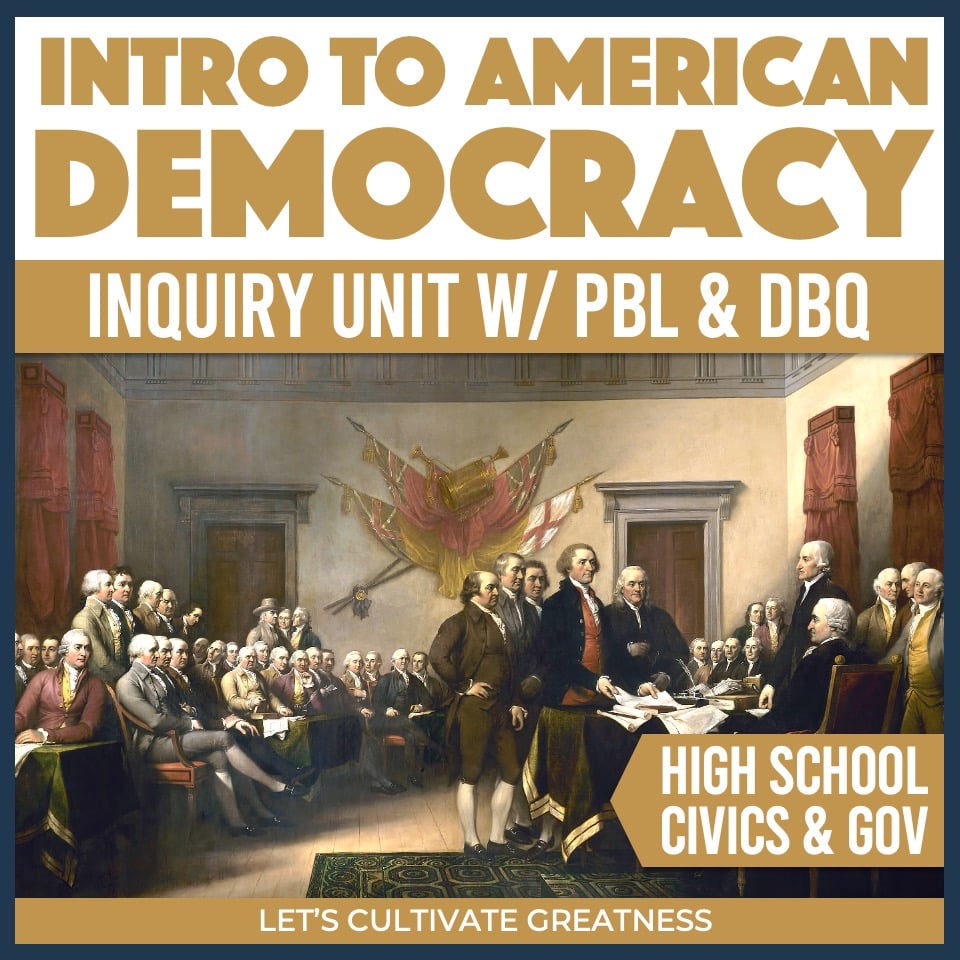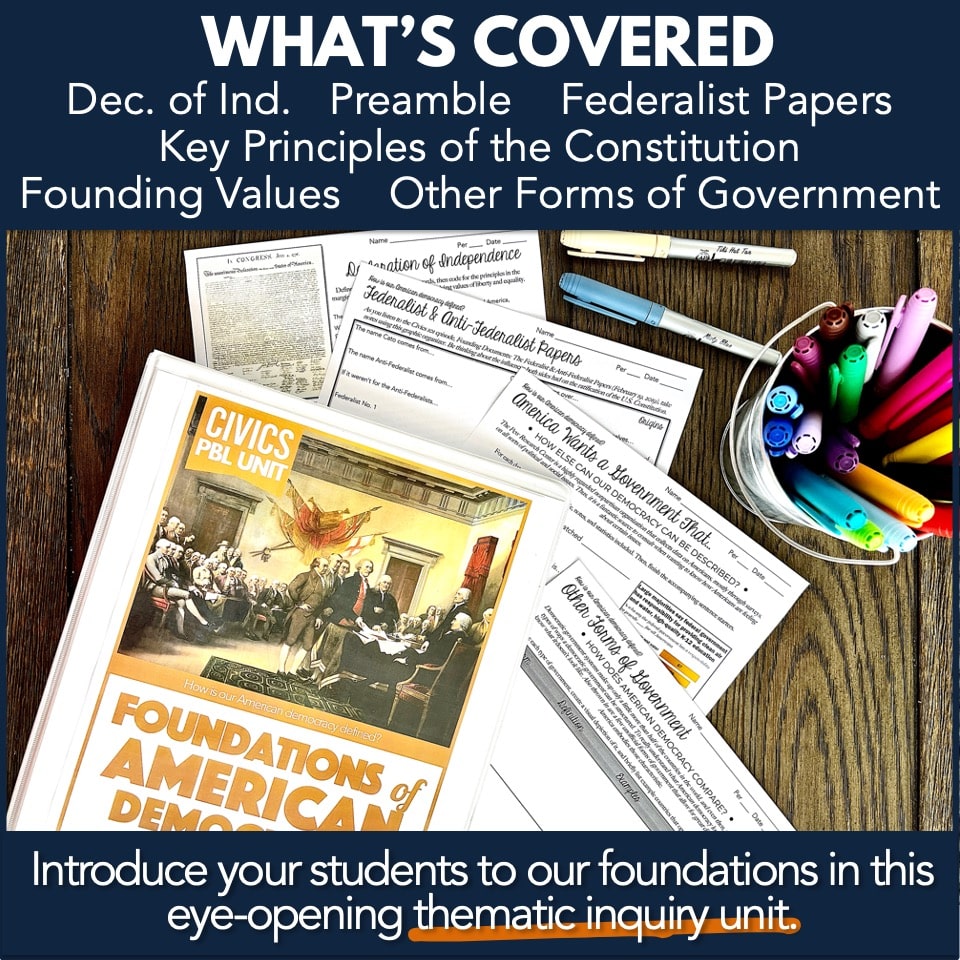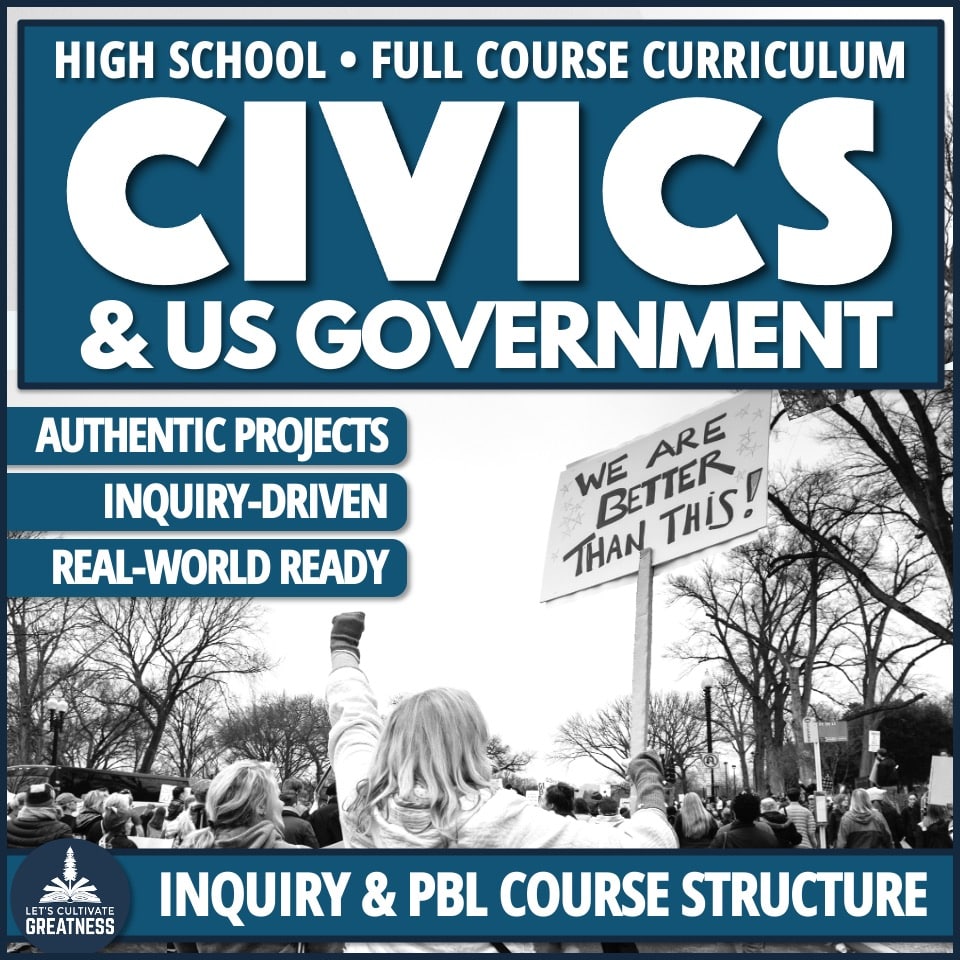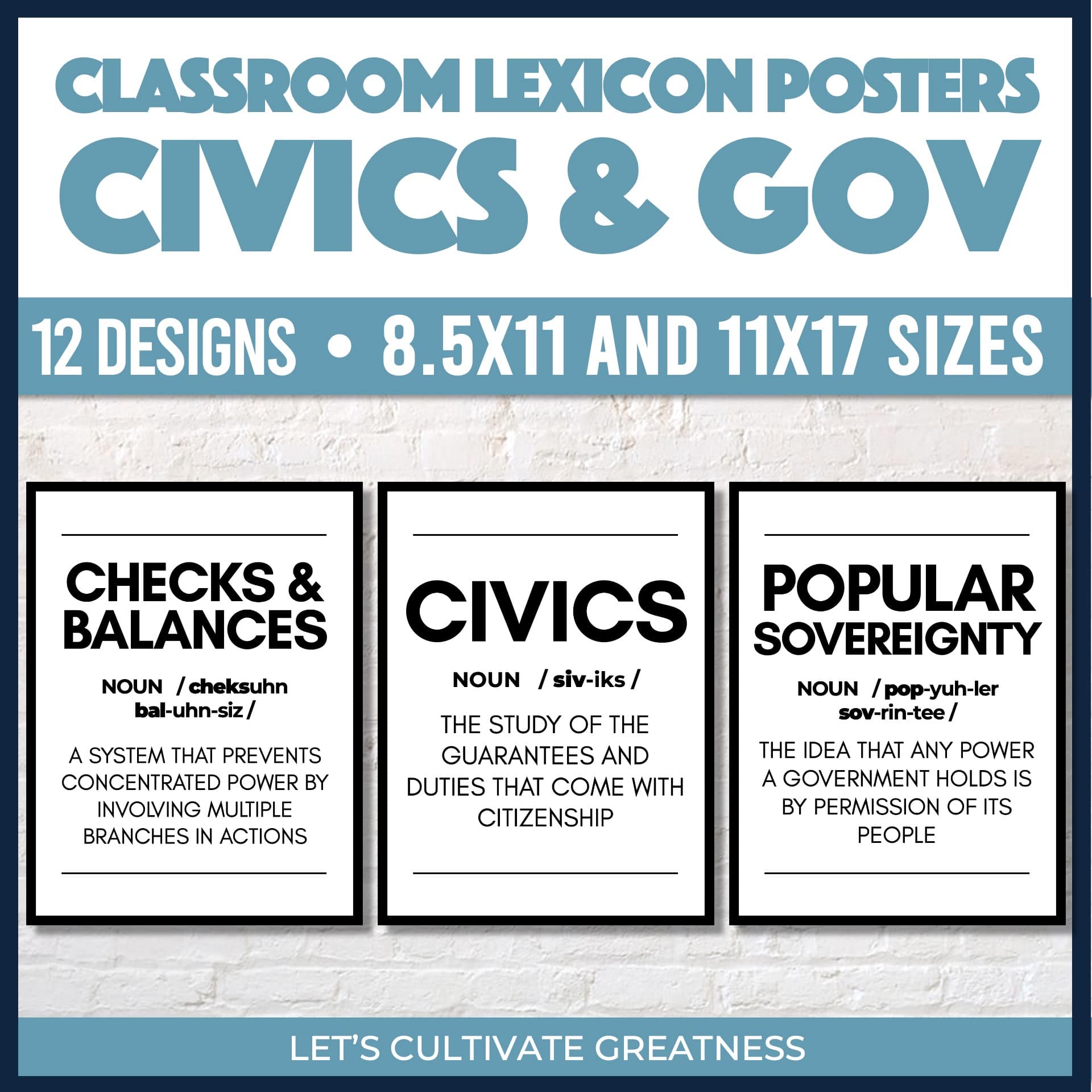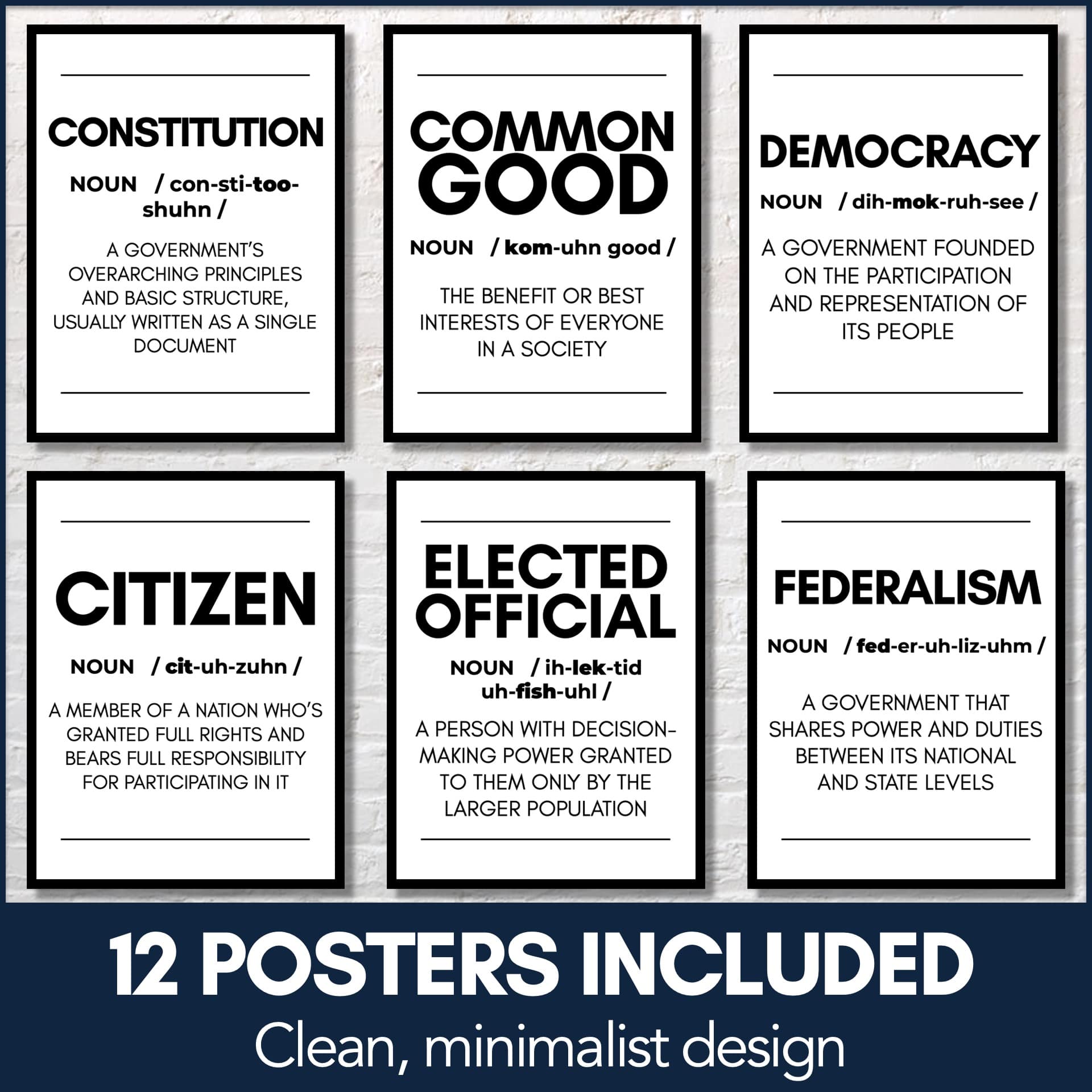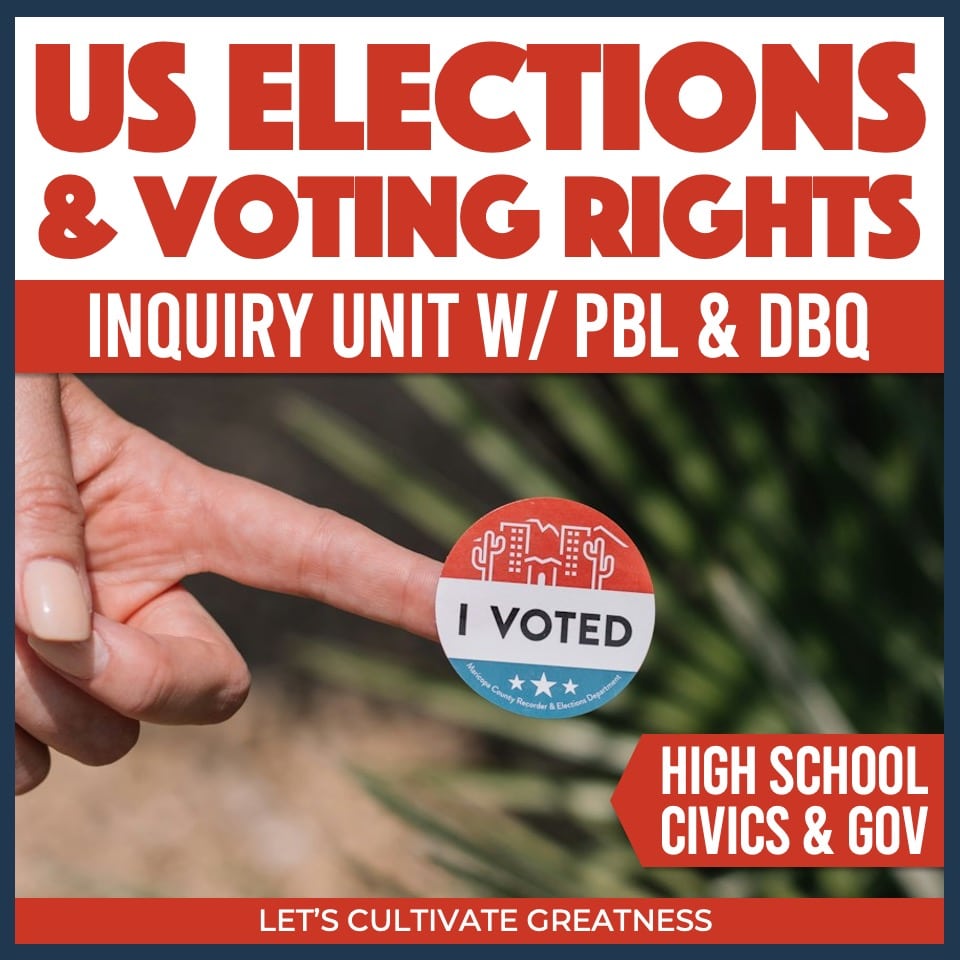An inquiry unit immediately makes abstract concepts into intriguing and relevant lessons.
Each activity is driven by a guiding question that builds towards the unit question as well as has students exploring current issues and relevant examples.
The unit culminates with students answering the question in a DBQ-style essay and an optional authentic PBL project.
This unit can be done well in 4-5 weeks and has been crafted to support the standards of various states.
Included in this complete Civil Liberties unit:
Overview
- Teacher Unit Overview with general notes, links, standards, and a pacing guide
- Daily Lesson Plans with step-by-step details, planning, and lesson takeaway notes
- Detailed Answer Keys for each activity
- Instructional Slide Deck to support activities and essay writing
- Student Unit Review and Skills handouts with self-checking questions and “I Can…” statements
- Student Unit Notes sheet for building deep and nuanced mastery of concepts over the course of the unit using powerful graphic organizers
- Student Skill Handouts that include Analyzing News Media Sources, Analyzing Political Cartoons, Annotating a Text, Deciding a Precise Position, Constructing a Thesis, Including Evidence, Finding Appropriate Sources, Creating a Works Cited, Annotating a Source, and Creating an Annotated Works Cited
Student Activities
- Unit Hook shock your students’ incoming knowledge of their Constitutional rights
- Unit-Long Graphic Organizer Notes build on these reference notes throughout the whole unit
- Common Good vs. Individual Liberties weigh the never-ending efforts to balance the two, by analyzing quotes from Founding Fathers to current members of Congress
- Original Constitution closely explore what the original document said about individual rights
- My Bill of Rights dissect the essential rights of Americans regarding free expression, privacy, criminal proceedings, and equality
- Differing Interpretations carefully consider the approaches of strict and loose interpretation, which create the basis of so much debate in our country
- No Vehicles Allowed simulate the task of judges to fairly and appropriately interpret and clarify the law in this fun scenario activity with optional presentation extension
- Current Supreme Court research and peer-teach the current members of the highest court
- Landmark Supreme Court Cases research and peer-teach the facts of famous cases that have helped define many of our basic rights
- Podcasts listen and note take to two engaging Civics 101 podcasts, which can be done in class or part of a “flipped” classroom set-up
- Political Cartoon & News Media Analysis blank forms tailored to each branch to use with your own current events media sources
- Card Sorts & Tarsia Puzzles review, assess, and strengthen learning with these included collaborative activities
- Print PDF & editable Google versions of all student sheets included!
2 Summative Assessments
- DBQ Essay support your students with a collaborative brainstorm review activity, detailed instructions, outline template, sentence stems, step-by-step slides, and rubrics that encapsulate their complete understanding by arguing their answer to the not-so-simple question, “How are my rights really defined?”
- School-Sponsored Speech Project after guiding students through a close look at free speech in the public school setting, provide them with the opportunity to take a stand and create a political message of their own, either by making a t-shirt, button, or a backpack tag, supported by a process paper and works cited sheet and included step-by-step guides and forms
ELL & Neurodiversity Supports
- Graphic organizers in activities to assist in concept understanding
- Collaborative, small-group activities that utilize spatial and kinesthetic skills and promote low-stakes student talk
- How-to skill sheets for essay writing and researching skills
- Clear fonts and visual organization best practices used assignment sheets
This resource is 146 PDF pages, plus Google files.
What grades is this intended for?
This was designed at a mixed-ability high school level. I cannot guarantee it for grades younger than that, though middle school teachers have reported success with the units in this course.
If you teach middle school, you may succeed best with the stand-alone activity kits available.
What supports are included? How can I modify this?
Activities are built with included supports to accommodate varying needs within a typical on-level course: images, sentence stems, graphic organizers, chunking, small-group and low-stakes student talk, manipulatives, how-two skill sheets, step-by-step essay and project forms, etc.
Student materials come in editable Google file versions to allow you to modify activities by shortening, re-leveling, translating, or using text-to-speech software to support student needs.
Can I use this in a homeschooling setting?
Sure! While this unit was designed with a traditional classroom setting in mind, it can be used in a solo or a small-group setting without too much tweaking.
Is this editable? What file types does this resource come in?
The main resource is a secured, non-editable PDF file intended to be printed. Included are links to editable Google files of all the student materials.
What standards does this address?
Several! Standards vary, but this resource supports these from various states:
- Analyze the structure and functions of the judicial branch, including the federal court system, types of jurisdiction, and unique characteristics of the Supreme Court
- Compare the roles of judges from that of elected officials, including the qualifications and requirements involved
- Describe the rights protected by the US Constitution and the Bill of Rights
- Evaluate how landmark Supreme Court decisions affect laws, liberty, and the interpretation of the US Constitution, Bill of Rights and other amdendments
- Analyze primary sources, determining central idea, citing textual evidence, and identifying author’s point of view and purpose
- Integrate multiple sources in diverse formats in order to form a coherent understanding and address a question
- Write argument focused on discipline-specific content, developing claim and counterclaim, selecting most signfignat pieces of evidence, using precise domain-specific language, and organizing ideas into a coherent arugment
- Make personal and real-world connections and refections to content
What are the terms of use for this resource?
This resource, including all ancillary files, may be used as needed for regular, non-commercial single-classroom use between a teacher and their students.
This includes printing copies and sharing digital files with students through a secure platform, like Google Classroom or Canvas, email, or a classroom-only shared drive.
The using and sharing of any part of this resource in any manner outside the above-mentioned capacity is strictly prohibited. Prohibited uses include, but are not limited to,
- posting files on the open internet or in a Facebook group
- emailing files to or sharing print copies with others (without purchasing additional licenses)
- uploading or storing files in a shared cloud drive accessible by anyone other than students
- including any part, or any derivative work, within any commercial endeavor like curriculum development, professional training, or for-profit teaching like Outschool, or selling this resource as your own in either print or digital formats
Doing so violates the Digital Millennium Copyright Act (DMCA), copyright law, and these terms.
By downloading this resource from Let’s Cultivate Greatness, the original user has been granted one license for a single teacher (or number of teachers matching the number of licenses purchased) and their students at any one time.
Let’s Cultivate Greatness retains the full copyright of this resource.
My students love the depth of this PBL unit. They truly embraced studying each of the civil liberties and their Constitutional Rights in relation to the Supreme Court. – Latricia D.
Everything you create is so detailed and fun and my kids and I love using the material! Thank you so much! – Jennifer T.
This is great and adaptable to remote learning with some modifications. Great resource full of real world, meaningful activities. – Alexandria M.


